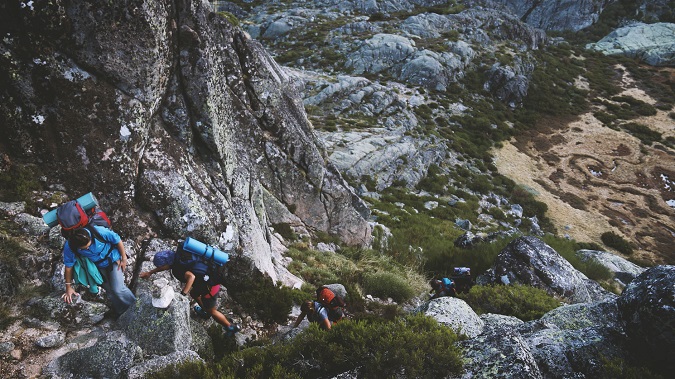
Whether you’re a novice or an experienced professional, fitting all the equipment you need for an outdoor adventure can be daunting. It all comes down to maximizing space and making sure you have the right clothes and equipment. The saying goes “there is no bad weather, only bad equipment”. So do your research and invest in quality items, especially when it comes to protecting yourself from the elements and possible injuries.
Paracord survival bracelet
Paracord is a lightweight twine made of synthetic fibers, used in the manufacture of military parachutes, providing a connection between the wing and the parachute. This rope is useful for attaching equipment, sewing ripped clothes or other materials, making a shelter or a lamp… Here you can find various durable and affordable paracord bracelet sets from which you can choose the one that will best suit your needs and your style. You can also use it for fishing, or buy the one with LED light, compass, fire starter, whistle, mini knife… The options are endless.
What food to bring?
The answer is simple: bring the food you like. Remember that you have come to nature to enjoy, so let your body enjoy healthy food as well. For day trips, the fruit is a good choice. It is healthy and will give you the water you need. However, for multi-day tours, dried fruit is a better choice because it is much easier to carry. In this case, you will need to drink fluid to avoid dehydration. Fruits contain many vitamins and calories with very little fat.
Tuna is also good for hiking. It contains a lot of protein and is a great meal with cheese and bread containing carbohydrates. Remember that even empty cans should be brought back because you cannot leave it on the mountain. Energy bars can be found in almost every major store. You may need to try more types until you find the ones that you will enjoy the most.
What you wear is important
Choose lightweight fabrics that wick moisture away from the body, that dry quickly if washed by hand and can be layered when needed. Whether you buy sportswear brands or fashion brands, look for synthetic fabrics like blends of polyester and spandex and microfibers. Always avoid heavy fabrics like 100% cotton and denim. Depending on what activities you will enjoy on your trip, you may also want to consider windproof and waterproof clothing and shoes.
Find perfect boots
If you are buying new hiking boots specifically for your trip, remember that while some boots may require a short time to adjust to your feet, they should still be comfortable from the moment you put them on in the store. Newer boots and shoes made of synthetic fabric don’t need much time to become comfortable, but if possible, put them to the test on terrain similar to what you’ll encounter on your trip.
Carefully choose your backpack
No matter the size or type of backpack, it is extremely important to find the best one to suit your needs and your body frame. An ill-fitting backpack can cause back pain, muscle tension, or even nerve damage. Look at the different styles and features – from daily packs and hydration packs to top-load zippers and interchangeable straps. Find the backpack that best suits your needs. When packing your backpack place oversized or oddly shaped items on the outside of the backpack to free up space inside. For example, place the bulky shoes in the outer pockets.
Protect yourself
Bring just enough bugs repellent. Also don’t forget to bring a well-stocked first aid kit with lots of bandages in different shapes and sizes, and something to disinfect the wound. One item that is always good to bring is a compact headlamp with a bright light. A headlamp will keep your hands free so you can easier move through the dark.
